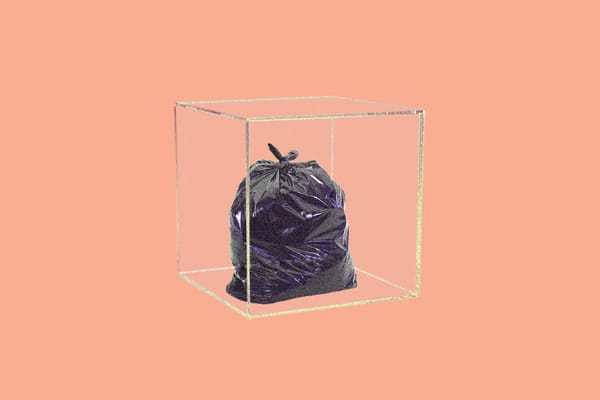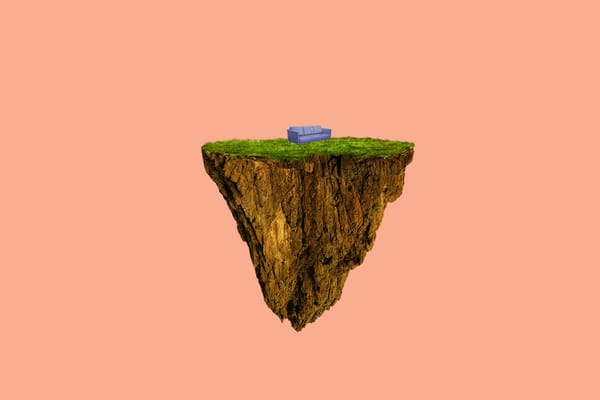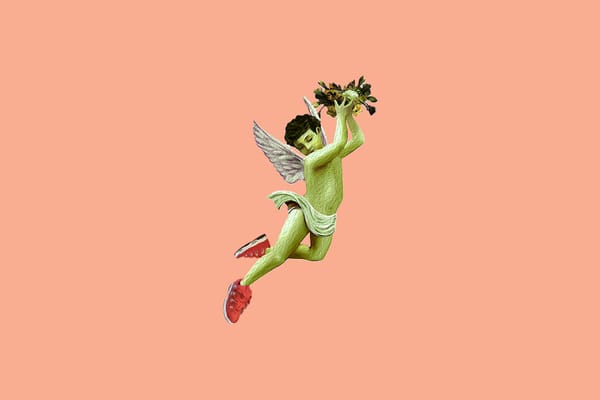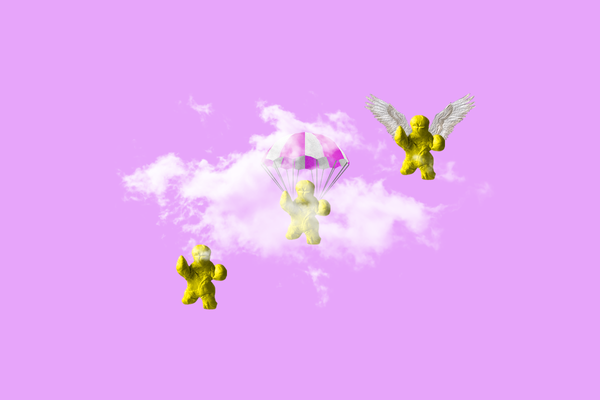Building the third place
DIY as a space to foster human connection, crack cold ones.

This is an extended version of a story that initially appeared in SBC Skateboard Vol. 23.2. You can look at that whole issue online here and subscribe to the mag here.
As internet culture does, big, consequential ideas often get compressed and shared in the most digestible way possible: the viral video. For better or worse, complicated and nuanced topics become postable memes that, if consumed, can take root in the brain. Front-facing camera videos are one of the most common versions of these rickety Trojan horses of knowledge.
This past fall, a popular walk-and-talk TikTok video by Nathan Allebach (user @nathanallebach) exploded in virality once reposted on Twitter. In it, Allebach details the decline of “third places” in the United States, a term coined by the sociologist Ray Oldenburg, and what Allebach describes as “somewhere where people hang out that isn’t home and isn’t work. Like cafes, clubs, bars, libraries, parks, plazas, barbershops,” etc. Essentially, shared spaces where community is formed through spontaneous conversation, creative expression, and general communal activities.
He goes on to say that social participation in third places has dipped dramatically over the last decades, this being due to a complicated confluence of factors like “technology, polarization, institutional distrust… car dependence… urban sprawl” and zoning that has made town centres into spaces of commerce where money must be exchanged to participate instead of free places for people to gather and foster organic connection. It’s not hard to argue that this creeping societal change has happened in cities across North America.
Now people build and discover new third places via the magic of the internet, through forums, online video games, and social media. But floods of advertisements, mis- and disinformation, and users’ general lack of media literacy tend to make these digital worlds into stunted, toxic places — ones that’re difficult to leave given a lack of available in-person options. In a display of meta-horror comedy, thousands of people retweeted and commented on Allebach’s video, lamenting the loss of IRL third places from the silos of their online ones. But the desire for real third places still exists. However, outside a sudden and seismic shift in rezoning and development, most of them now come to life through the concerted efforts of small and passionate groups of people. In an abbreviate sense: DIY.

From ragtag art and performance venues to a slop of concrete smeared at the base of a Jersey barrier, Allebach contends that these places are all reactions to a need for space in one way or another. Space to meet and do something creative or simply enjoy the company of others.
If one wanted to, one could describe the act of skateboarding as being exclusive to “third places.” Whether designated (skatepark), one skateboarders have designated themselves (skate spot), or a third place they build outright (DIY). However, DIY spots provide the most all-encompassing third-place experience. They require friends to gather, game plan, build, and, eventually, skate. You and friends, new and old, constructing the obstacle you’ll subsequently get tricks and eat shit on — there’s a unique feeling of accomplishment and camaraderie in that. And for the local skateboarding community where those DIY spots are built, they now have a new place to skate, to try, fail, and succeed in the company of others.

In the last few years, there’s been a steady uptick in the number of DIY spots built across Vancouver, BC. Most of them can be credited to a group of friends who’ve been skating and building together for over two decades. With their projects collected under the Instagram handle of @SandcastleDIY, one can take a leisurely scroll through the app to see all of the different barriers, curbs, wallrides, and funky transitions that have been built by Karl Theaker, Danny Wartman, and Cory Lakeman.

The trio, childhood friends originally from Saskatchewan, would build their first spot in Burnaby in 2009: That classic slop of concrete at the base of a barrier. But it wasn’t until the early days of the Coronavirus pandemic in 2020 — when uncertainty reigned and finding some way to occupy yourself was paramount — that their building would begin in earnest.
A quiet backstreet behind a parking lot near the Emily Carr University campus would see their first significant efforts, starting with a few lengths of well-lacquered curbs and some accompanying concrete up to them. Then a friend, who conveniently had a crane truck, would steal three full-size barriers and haul them to the spot, placing them along a slight bend in the road and creating a long, flowing ‘S’ of barriers. And thus, Emilyside was born. For the next few months, skaters from all over the city had a new haven. Its curbs, small quarter pipes, and barriers made it an inviting space for beginners and hardened, crusty veterans alike.

In the new pandemic-shaped world where wherever my laptop and I happened to be was my office for the day, I could wake up early, spend an hour or so at Emilyside, then return to my apartment covered in sweat, dirt, and shinners, ready to start the day. It was a refuge from that uncertainty which defined the time. And once the city levelled Emilyside (the barriers, however fun they were, were unfortunately built in front of a fire hydrant), the Sandcastle crew would find another locale to set up shop. A large square slab of cement under the Burrard Bridge was soon home to concrete quarters and barriers on all sides. A Quikrete path snaked from the original slab to one of the bridge legs, ending in a wallride that saw skaters to creep to sketchier and sketchier heights.

An incoming condo development in the area ultimately led to the space being fenced off and the crew’s builds removed, which you’d imagine would be a heartbreaking thing. All that time, money, and effort trapped behind a metal fence bound for doom. But that’s simply the nature of DIY. The Sandcastle crew is well aware — it’s part of the appeal. All of the work, people, and energy that goes into it is what makes the experience so rewarding, even if the results are temporary.
“That’s really the best part. Meeting new people that want to pitch in or come through and skate… It just brings a bunch of good energy to the local garbage dumping spot until we go overboard or there’s a fire hydrant or whatever,” Theaker says.

That good energy would eventually return to the original Emilyside location with a new barrier setup (this time placed away from the hydrant). Dubbed Reginaside in a nod to the crew’s prairie roots, this build wouldn’t last long, but it was clear by then that each effort had an impact. From giving skaters a new home, the Sandcastle crew getting compliments and job offers from the city workers tasked with removing their spots, to cops choosing to ignore the beer cans and mixing of concrete on public roadways. One officer even approached the crew and asked to use a skateboard. “That one nerd cop bagged himself trying to kickflip that day,” Lakeman reminisced fondly.
Once Reginaside was gone, the crew was back under the Burrard bridge, moving the fences and dragging barriers inside to be ‘creted again — death, rebirth, etc. What should be a tedious, tiresome prospect and process is so much more. The creation of these third places is a third place in itself. The mixing of Quikrete and water to build a quarter pipe and community. This is what Allebach and those of us trapped inside our phones lament the demise of. A place beyond the internet. An experience that’s, well, experienced. Or, as Wartman described it, “I love the whole process. Filling up the truck full of bags till the suspension is slammed. Rolling up to some place and creating rad shit that you know people are gonna get some on and have a great time. Getting that nice shape in it just when the bbq starts smelling good [and there’s] good music and beers cracking. Doesn’t get much better, to be honest.”





